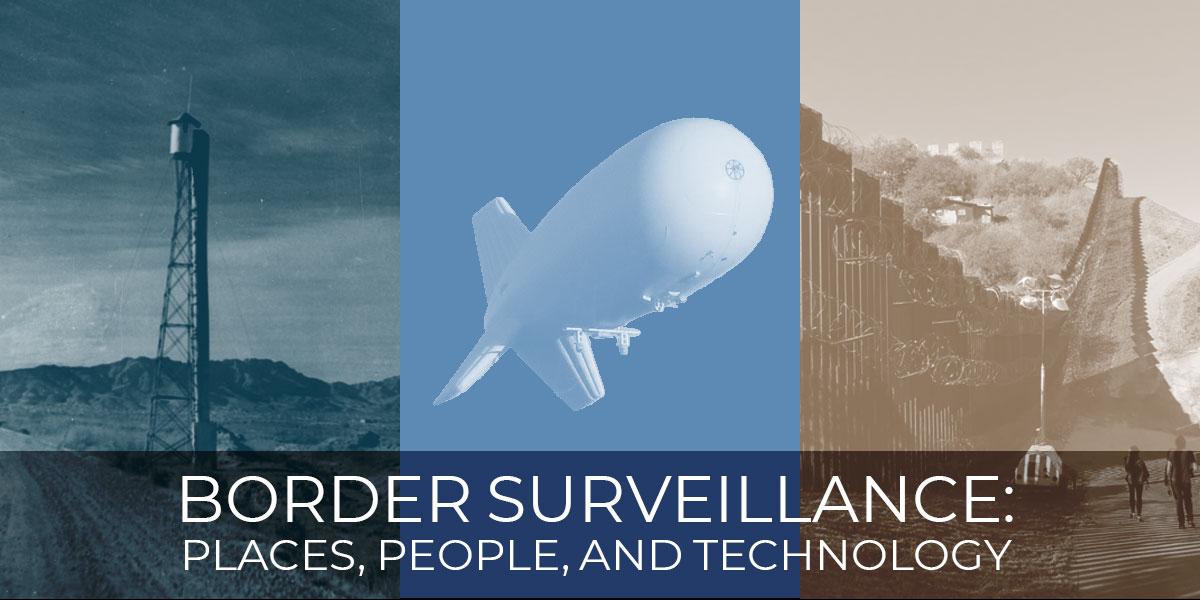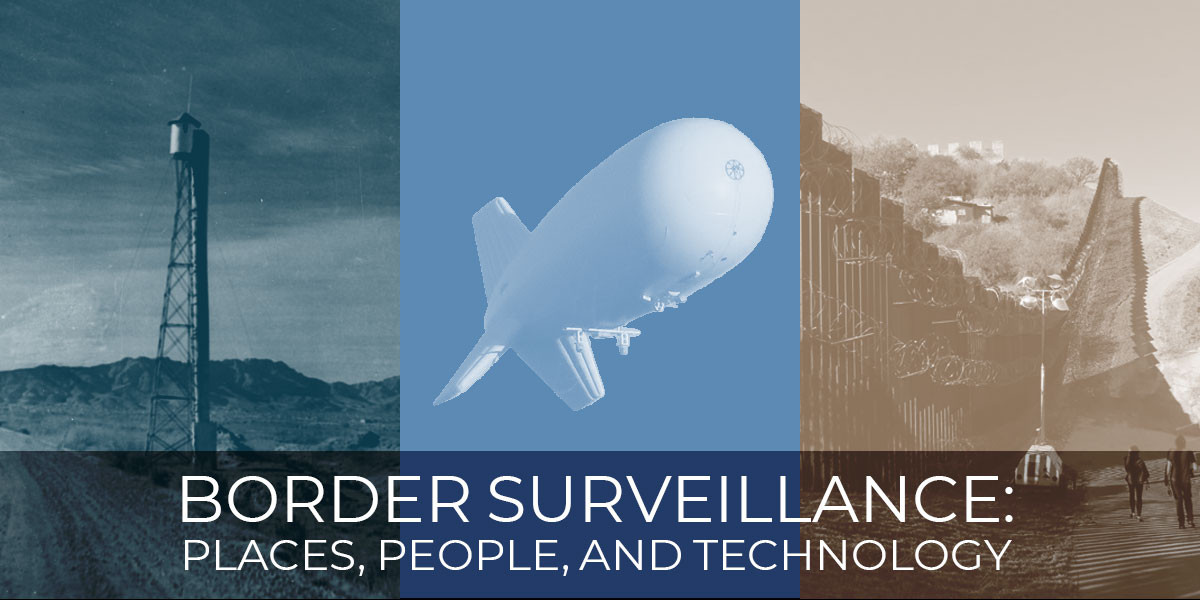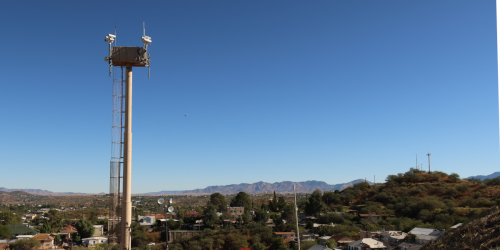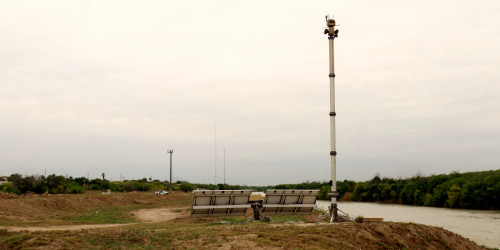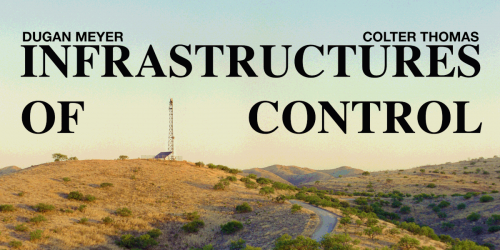SAN FRANCISCO—The Electronic Frontier Foundation (EFF) has installed a photographic and informational exhibit on border surveillance technology for public viewing at Angel Island State Park—the first such display ever in a California State Park and a National Historic Landmark.
The “Border Surveillance: Places, People, and Technology” exhibit—launching Wednesday, April 2 and open through late May in cooperation with the Angel Island Immigration Station Foundation (AIISF) and California State Parks—explores the “virtual wall” that the U.S. government has built along the U.S.-Mexico border, affecting people’s civil rights on both sides.
“There are few better places than Angel Island, where U.S. policy enabled the persecution of thousands of Asian immigrants, for an exhibition on the tools used today to conduct warrantless spying on people on both sides of the U.S.-Mexico border,” said EFF Senior Policy Analyst Dr. Matthew Guariglia. “We hope that as people visit Angel Island to reflect upon America’s immigration policies of the past, this exhibit will help them reflect on how we deal with our borders—and the people who live and travel there—now and in the future.”
EFF for years has been amassing data and images about the massive increase in surveillance technology infrastructure at the U.S.-Mexico border. EFF staff members have made a series of trips all along the U.S.-Mexico border, from the California coast to the tip of Texas, to learn from communities on both sides of the border, interview journalists, aid workers and activists, and map and document the technology installed there.
The exhibit consists of eight large panels of images and text describing various technologies including aerostats, drones, fixed and mobile cameras, ground sensors, and more. Some panels also discuss the history of border surveillance, and possible future technology deployments including augmented reality and artificial intelligence.
The U.S. Immigration Station, Angel Island, is a National Historic Landmark located within Angel Island State Park in California’s San Francisco Bay. From 1910 to 1940, the station processed nearly a million immigrants from more than 80 countries. While often called “the Ellis Island of the West,” Angel Island was in fact quite different. Arrivals at Ellis Island were welcomed to this country by the Statue of Liberty, screened primarily for medical reasons, and usually released within hours of arriving; at Angel Island, the objective was to exclude many new arrivals, often under the Chinese Exclusion Act of 1882.
Most of the 175,000 Chinese immigrants who arrived at Angel Island were detained for a few weeks—some were detained up to 90 days and a few for almost two years—while their applications were considered. Many detainees expressed their anxiety and despair by writing and carving on the wooden barracks walls; some wrote poignant poems, still legible today.
"The historic detention of immigrants at Angel Island is interconnected with surveillance efforts along the U.S. southern border," noted AIISF Executive Director Edward Tepporn. "Just as Angel Island was built primarily to process and detain Asians and Pacific Islanders, early border surveillance efforts focused on Chinese immigrants. Surveillance technology has evolved over the years, and this exhibit provides visitors a chance to contemplate the intersections of safety and privacy at the personal, community, and national levels."
In conjunction with the Angel Island exhibit, EFF will host two free panel discussions—one livestreamed, one in person—about border surveillance technology:
Thursday, April 3, 1-2 p.m. PDT: “Life and Migration Under Surveillance at the U.S.-Mexico Border” livestream (RSVP at https://www.eff.org/livestream-border) featuring:
- Petra Molnar, co-director of the Refugee Law Lab and the Migration and Technology Monitor, faculty associate at the Berkman Klein Center for Internet and Society at Harvard University, and author of “The Walls Have Eyes: Surviving Migration in the Age of Artificial Intelligence”
- Pedro Rios, director of the American Friends Service Committee’s U.S./Mexico Border Program, steering committee member for the Southern Border Communities Coalition, and board member for the National Network for Immigrant and Refugee Rights
- Todd Miller, journalist at The Border Chronicle and author of “Build Bridges, Not Walls: A Journey to a World Without Borders”
- Dave Maass, EFF Director of Investigations
- Dr. Matthew Guariglia, EFF Senior Policy Analyst (moderator)
Wednesday, April 9, 6-8 p.m. PDT: "Tracking and Documenting Surveillance at the U.S.-Mexico Border” live in-person discussion at the Internet Archive, 300 Funston Ave., San Francisco, CA 94118 (RSVP at https://www.eff.org/borderevent) featuring:
- Lauren Markham, award-winning author, essayist and journalist
- Daniel Werner, Senior Staff Attorney at Just Futures Law
- Alex Mensing, longtime border activist and Communications Manager at the California Collaborative for Immigrant Justice
- Saira Hussain, EFF Senior Staff Attorney
- Hannah Zhao, EFF Senior Staff Attorney (moderator)
For more on EFF’s border surveillance work: https://www.eff.org/issues/border-surveillance-technology
For EFF’s 2024 ‘zine guide to border surveillance technology (in English): https://www.eff.org/files/2024/05/06/borderzine-2024-5-6-en.pdf
For EFF’s 2024 ‘zine guide to border surveillance technology (in Spanish): https://www.eff.org/files/2024/05/06/borderzine-2024-5-6-es.pdf


